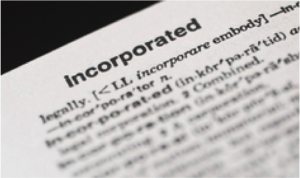 The primary advantages of operating as a corporation are liability protection and potential tax savings. Like any important decision, choosing whether to incorporate involves weighing the pros and cons of the various business structures and should only be done after careful research.
The primary advantages of operating as a corporation are liability protection and potential tax savings. Like any important decision, choosing whether to incorporate involves weighing the pros and cons of the various business structures and should only be done after careful research.
Once incorporated, the business becomes a separate legal entity, and assets of the corporation are separated from the owner’s personal finances. As a result, the owner’s personal assets generally can be shielded from creditors of the business.
To maintain this legal separation and avoid “piercing the corporate veil,” the corporation must observe certain formalities, including:
- Keeping corporate assets and personal assets separate (no commingling of funds)
- Holding shareholder and director meetings at least annually
- Maintaining a corporate record book including bylaws, minutes of shareholder and director meetings, and shareholder records
- Filing annual information statements with the Secretary of State
- Filing a separate tax return for the corporation
Many business owners are concerned about “double taxation” of income that affects certain types of corporations known as “C-Corporations”. Double taxation results when the C-corporation has profit at the end of the year that is distributed to the shareholders. That profit is taxed to the corporation, at the corporate tax rate, and then the dividends are taxable income to the shareholders on their personal tax returns. However, the corporate tax and dividend rates can be lower than the individual tax rate that a sole-proprietor would pay on a 1040 Schedule C, and a knowledgeable accountant or tax attorney may be able to advise on how to minimize the burden of double-taxation and indeed pay an effective tax rate which is lower than what a sole proprietor would pay.
For example, a small C-Corporation will likely have a shareholder who is also an employee. Paychecks to the shareholder/employee are, of course, tax deductible to the business. To the shareholder/employee, they are taxable income (as would be the case with a paycheck from any employer). A bonus could be paid to the shareholder/employee in order to lower the corporation’s taxable profit, eliminating the double-taxation. These calculations should be performed by a tax advisor, but shifting income from the corporation to the shareholder/employee (or not, depending on which has the lower tax rate) can be an effective way to lower your overall tax liability. In addition, there are certain advantages that are only available with a C-Corporation, such as full tax-deductibility of medical benefits for a shareholder/employee.
The S-Corporation avoids the double-taxation by offering a tax structure similar to the Limited Liability Company. A corporation with 100 or fewer shareholders can elect to be treated as an S-Corporation. If the corporation is profitable, the shareholder/employee must draw a reasonable salary (and pay employment tax on it), but then all remaining corporate profits flow through to the shareholder’s personal tax return (thereby avoiding the FICA tax on the portion of profits that is taken as a dividend).
An experienced attorney can help you decide which form of ownership is best for your business, help you establish the entity, and ensure the required formalities are observed.
